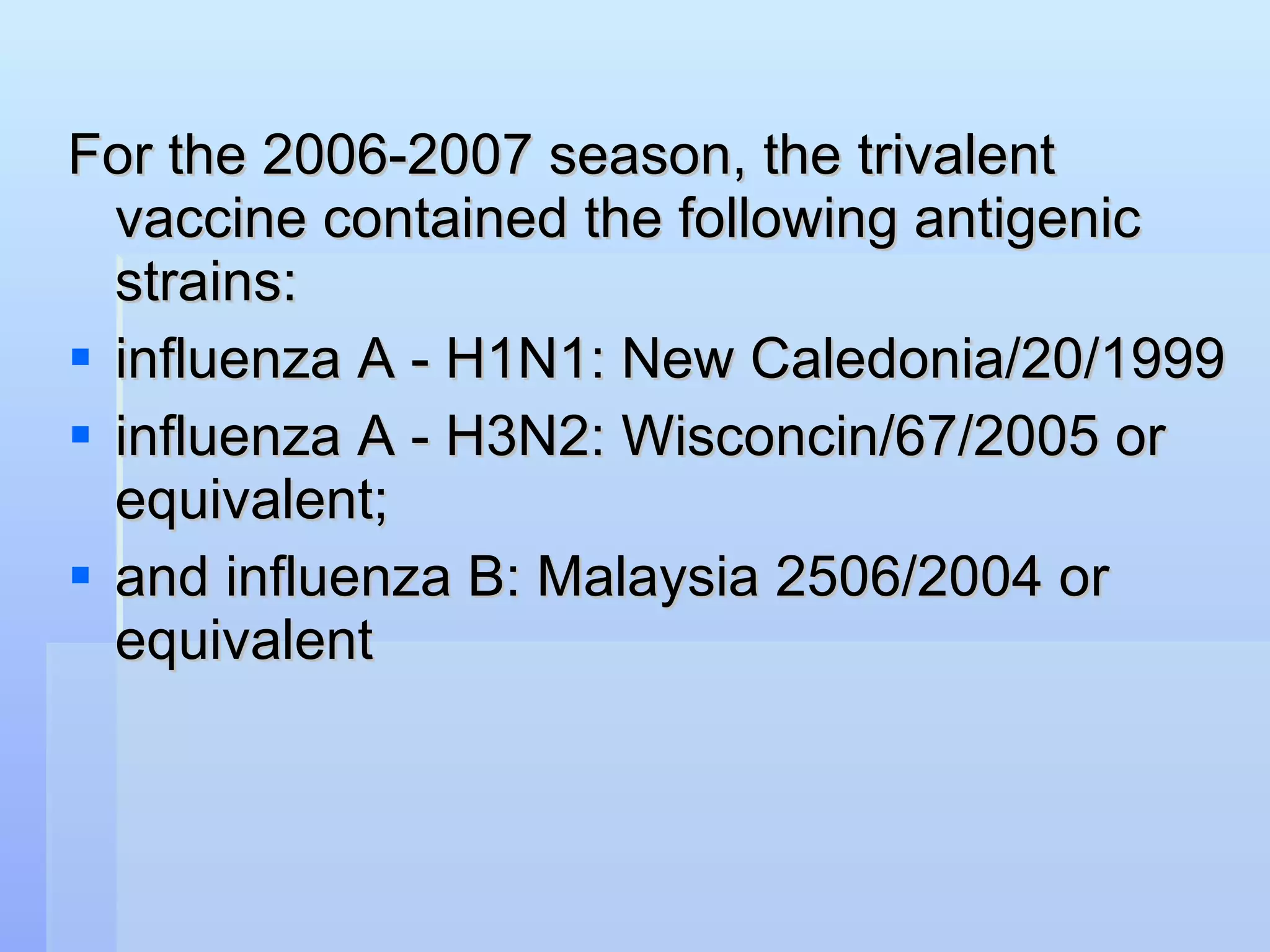Influenza is an acute respiratory infection caused by influenza viruses types A, B, and C. Type A is more pathogenic and causes pandemics by mutating into new subtypes. The virus attaches to respiratory cells using hemagglutinin and neuraminidase proteins. Symptoms include fever, cough, and sore throat. Complications can include pneumonia. Antiviral drugs like oseltamivir and zanamivir can reduce symptoms if taken early. Vaccination is recommended for high-risk groups annually.




























